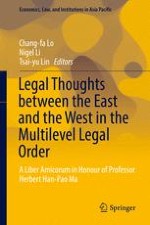This book focuses on the interaction and mutual influences between the East and the West in terms of their legal systems and practices. In this regard, it highlights Professor Herbert H.P. Ma’s achievements and his efforts to bring Eastern and Western legal concepts and systems closer together.
The book shows that, while there have been convergences between different legal regimes in many fields of law, diverse legal practices and approaches rooted in differing cultural, social, political and philosophical backgrounds do remain, and that these differences are not necessarily negative elements in the contemporary legal order. By examining different levels of the legal order, including domestic, regional and multilateral, it goes on to argue that identifying these diversities and addressing the interactions and mutual influences between different regimes is a worthwhile undertaking, not only in terms of mutual enrichment, but also with regard to intensifying the degree of desirable coordination between different legal systems.
All chapters were written by leading experts, practitioners and scholars from different jurisdictions with expertise in various fields of law and different levels of the legal order, and discuss a number of issues with particular focus on either “one-way” or mutual influences between the Eastern and the Western legal systems, practices and philosophies.
